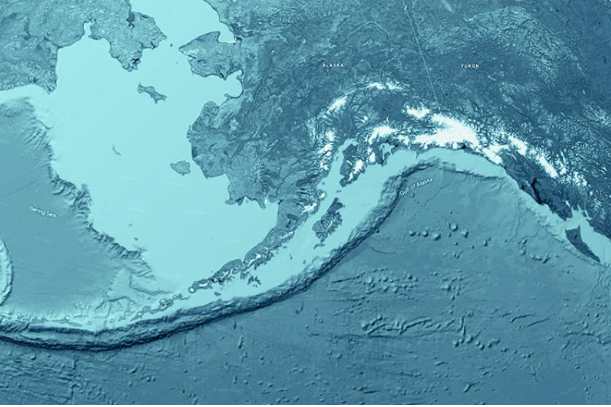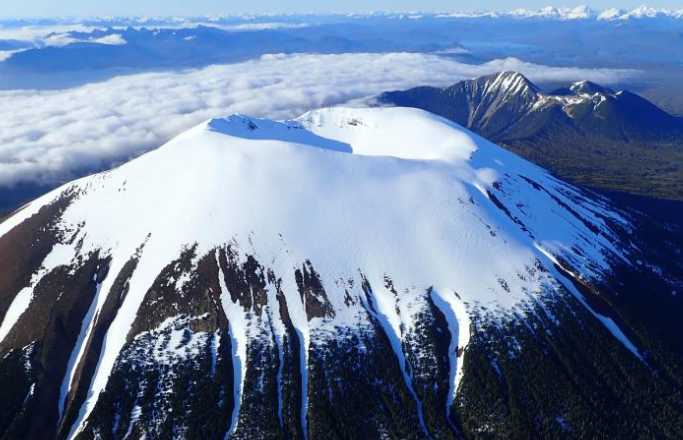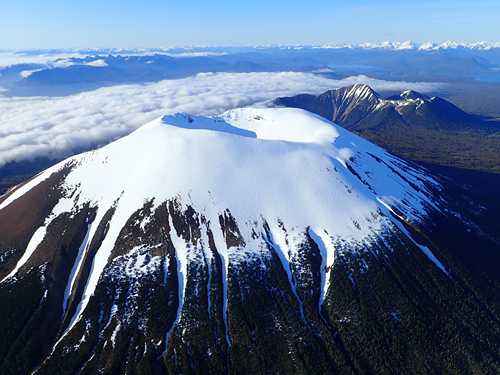ALASKA-The Cleveland volcano is showing signs that it is stirring for a brief awakening once again. The Alaska Volcano Observatory announced that a small, 133 foot in diameter dome had been extruded from the volcano in recent days. This prompted the volcanoes level to go to orange or watch level.
Mount Cleveland, is a strato-volcano perched on Chuginadak island, which itself is positioned between the Bering Sea and the Pacific Ocean, and almost at the halfway point between Dutch Harbor and Atka on the Aleutian Chain. The volcano for almost 70 years has only emitted periodic plumes of short duration. At times, Cleveland will produce lava as well, but the flows are generally small and short-lived. The volcanic island is named after the Aleutian Fire -Goddess, Chuginadak, who is believed to live in the volcano there.
This volcano is one of the most active volcanoes inhabiting the Aleutian Arc and has erupted more than 21 times in the last 230 years. The most memorable eruption of Mt. Cleveland took place in 1944. This eruption was much larger in scale and the reporting of it greatly enhanced as people were present to observe the eruption. It is also at this location and time that the one and only reported death directly caused by a volcanic eruption in Alaska took place.
That eruption began in the early hours of June 10th, 1944. It began as a small plume accompanied by small earthquakes. Shortly thereafter a debris flow materialized on the south slope of the volcano. It consisted of mud, rocks, ash and water. The only fatality of the volcano was a Sergeant Purchase, from a detachment of the Eleventh Air Force, who had taken an early morning hike towards the mountain the day the mountain stirred back to life. It is surmised that he died in a debris flow from the volcano. All attempts to locate the Sgt. were cut off because of numerous debris flows in his direction.
By early the next day, the volcano came to full life as it began launching boulders at least 20 to 40 feet in diameter thousands of feet in the air, some of which came down great distances off-shore. This downfall of rocks and debris would continue for at least 12 hours before, in a startling climax, the entire top of the mountain blew off and lava began flowing down all sides.
Because of the ferocity of the eruption, all efforts to locate the Sgt. were called off and the remainder of the detachment was loaded onto boats and taken from the island, the outpost was closed and no one returned for the duration of World War II.
Because of the remoteness of this volcano, not much data can be accumulated on it. Observation of the volcano relies on observations of planes and boats passing the volcano. It is also monitored by satellite. The greatest threat from this volcano is the ash clouds it emits. These ash clouds impede air travel along the Alaska-Asia Air Route.








